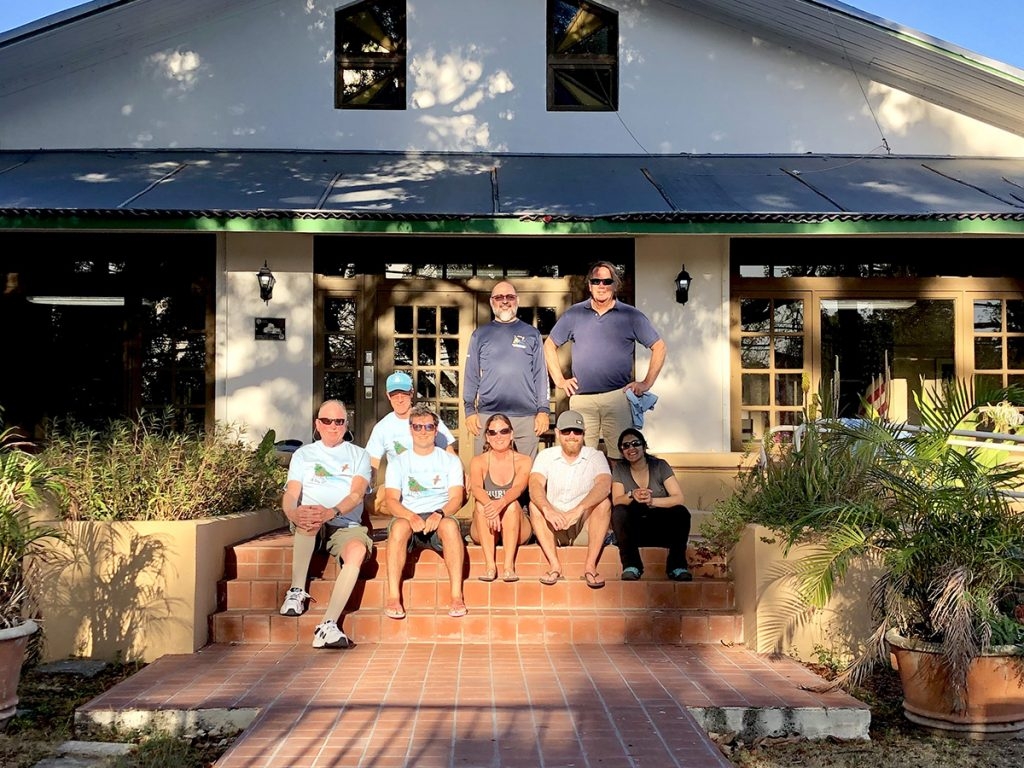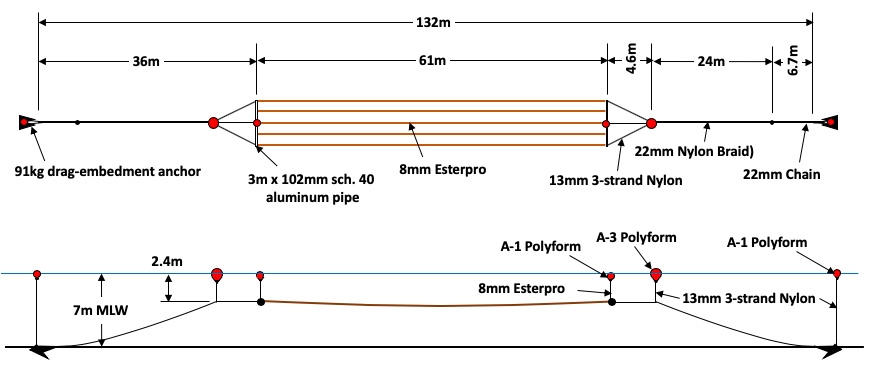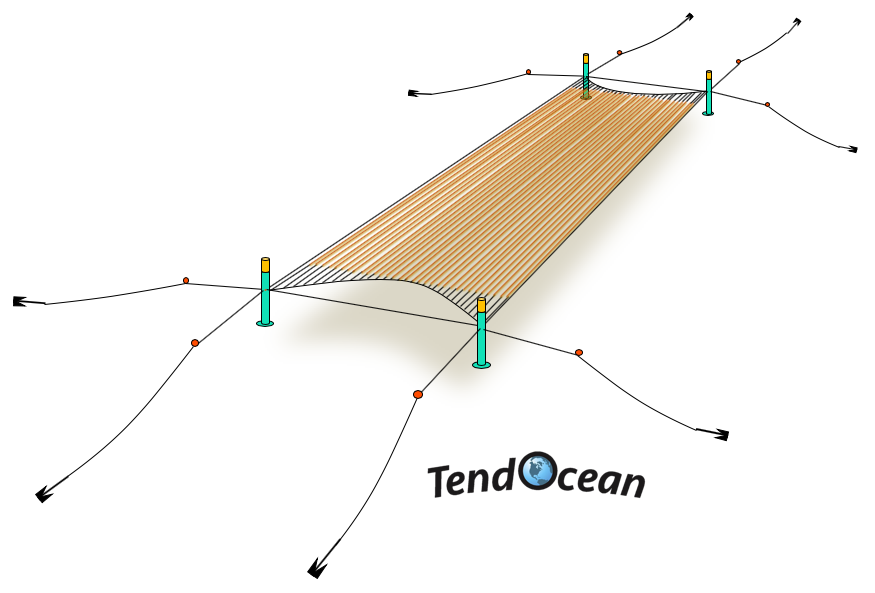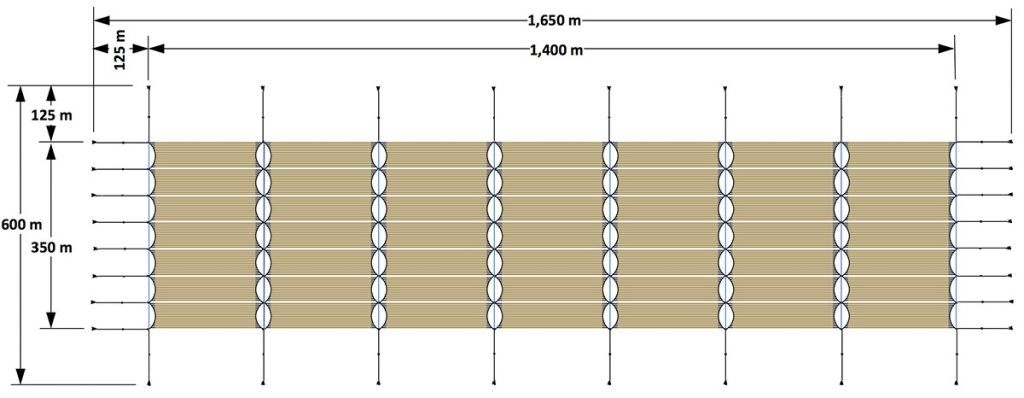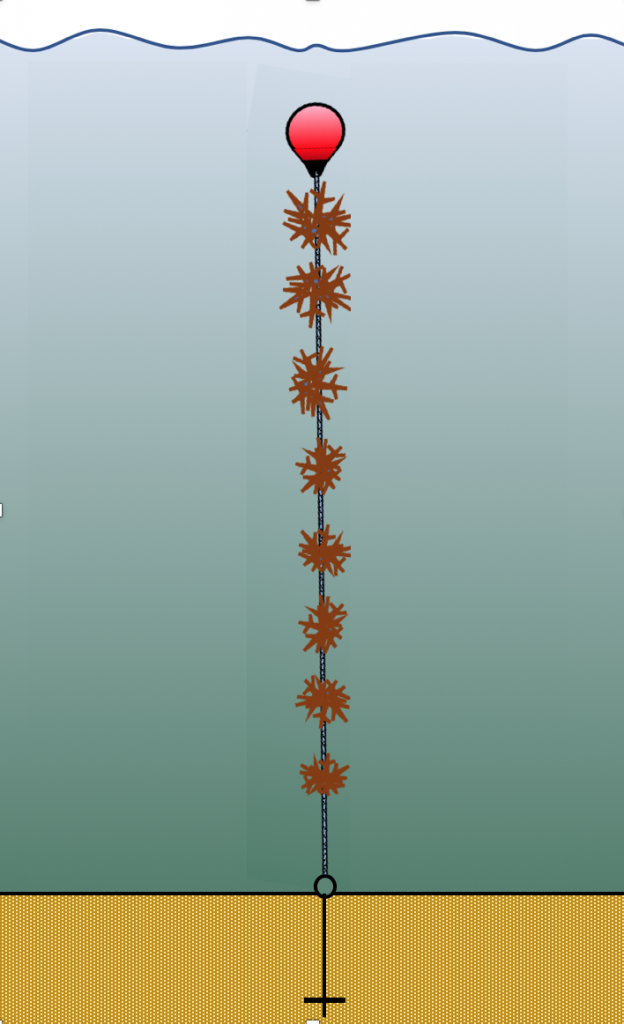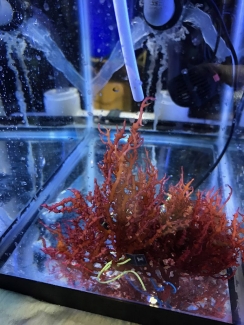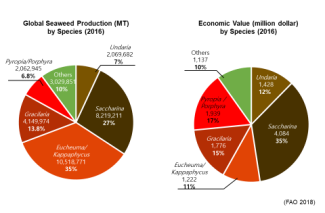Tropical Seaweed Research
The main goal of the project is to optimize production of desirable macroalgal bioproducts and biofuel at a significantly lower cost than current technologies. Here we focus on the tropical red alga, Eucheumatopsis isiformis (Eucheuma isiforme), with an existing market for production of carrageenan as an essential step in the pathway towards viable conversion of macroalgal biomass to fuel. We have five principal objectives that address the risks and roadblocks that currently limit the economic viability of macroalgae as feedstock for biofuels:
Goals: Perfect our design and rigging methods to ensure a farm design and operations that are compatible with exposed, offshore conditions with minimal environmental impacts.
Starting in late 2020/early 2021, our experimental ocean farms will begin an optimization process based on field studies and smaller deployments during the first year of field deployments. Vertical test moorings will be used to determine the best culture depth. Mini-arrays will be studied for two harvest cycles (or four months) to understand the growth conditions and environmental forcing on planted growlines, as well as test new mechanized seeding and harvesting strategies. Load cells will inform our modeling efforts, and drag tests will be used to build a robust drag model.
Goals: Physicochemical – Characterize nutrient and hydrodynamic loads at the farm scale.
Biological – Identify the social and environmental impacts and benefits of macroalgal farms to ensure sustainability.
We will measure environmental parameters at farm sites including benthic structure before, during, and after installation of the farm system in the field to understand the range of conditions on a daily and seasonal cycle, and the impact of the installation on environmental conditions and ecosystem function. We will continue to work with local stakeholders to ensure farm systems are both environmentally and socially sustainable.
We will utilize a combination of instruments and methods in collaboration with MARINER Category 3 (UCI, PNNL, and Makai) and 4 (UCSB) teams and other partners to understand daily (e.g., underwater temperature loggers) and monthly (e.g., monthly pH, salinity, and nutrient sampling) environmental variations and algal health, as well as bathymetry changes (e.g., side scan sonar) to build a complete picture of the farm site pre- and post-deployment and to better inform and validate the modeling efforts. See Modeling for more details. Biological data from visual and acoustic surveys will help us better understand ecosystem services (e.g., nursery habitat or improved water quality) the algal farms might provide and how larger animals like sea turtles and marine mammals interact with the structure.
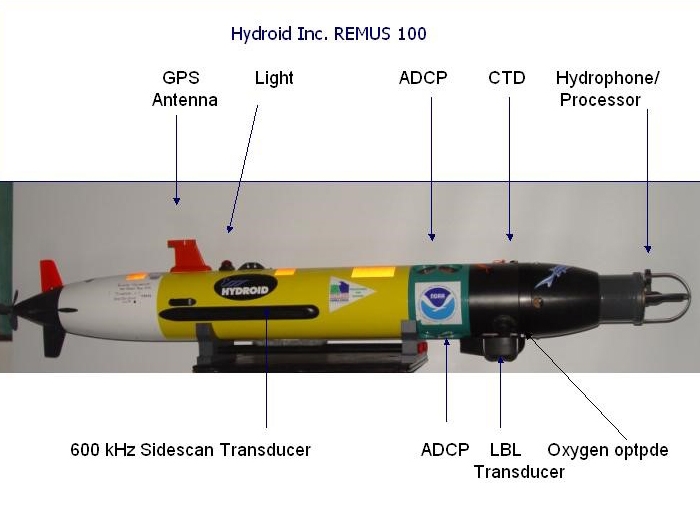
Goals: Understand how biology of tropical algae is impacted by environmental variables.
The red alga, Eucheuma isiforme, native to the tropical and subtropical western Atlantic, as well as the Gulf of Mexico, is the only species native to the U.S. EEZ with a ready, high-value market, namely via its high carrageenan content, as well as propagation via vegetative cuttings that eliminates the need for expensive nursery facilities. The global carrageenan market produces 60,000 tonnes from Eucheumoids vegetatively in mainly China and Indonesia, valued at $750 million/year.
We will measure how the metabolite composition and growth rate of macroalgae vary under different cultivation conditions to determine the optimal conditions for production of bioproducts or characteristics of interest, particularly carrageenan content and quality. Additionally, we will measure baseline parameters needed for the nutrient and growth models, including growth and photosynthesis, nutrient uptake, and mortality.
We will use transcriptomics to determine genetic markers (SNPs) in experimental strains and to identify differentially expressed genes correlated with characteristics of interest, particularly carrageenan content and quality. MARINER collaborators (UCSB) have developed autonomous and semi-autonomous technologies capable of monitoring biomass productivity and physiological status, as well as the environmental conditions that control its near-term production for temperate algae, but will be developing analogous systems for tropical algae.
Goals: Use computational modeling tools to facilitate the assessment and siting of macroalgae cultivation systems.
Simulation of offshore macroalgal farms requires knowledge of ocean conditions at the site of interest. This includes standard oceanographic physical, chemical, and biological parameters.
Macroalgae are grown from suspended structures that have the potential to generate new flow features that have yet to be computationally or observationally explored. Teams will develop a fine-scale turbulence model to assess how flow attributes, hydrodynamics forces, and nutrient availability respond to different farm designs and cultivation techniques.

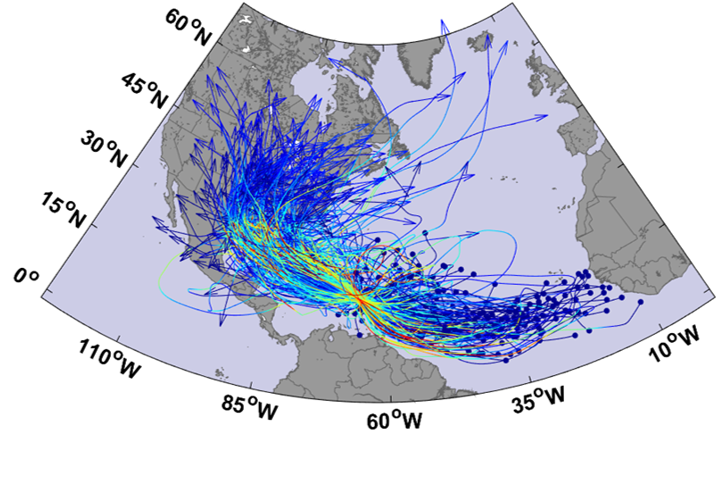
Goals: Support sustainable commercialization efforts.
Economic modeling and life cycle analysis are critical components for the sustainable development of large-scale farm macroalgae farming. The main focus will be on five key areas: (1) developing and improving our cost model; (2) refining the operating plan for assets and personnel; (3) improved life cycle cost and net energy estimates for the harvested biomass; (4) pro forma financials for a commercial scale farm; and (5) a market assessment to characterize the market volume and prices for products from algae biomass to support the development of business plans and commercialization efforts.
Key risks identified by our techno-economic model include:
- Growth rate has the greatest impact on cost of production. Year-round production of algal biomass provides a distinct advantage over current crops such as kelps that produce only a single harvest. The risk of lower yields can be spread over multiple harvest cycles; and the farm maintains consistent operations without interruption throughout the year. The warm water tolerance of tropical species allows them to exploit a wide range of habitats unavailable to species currently grown in the US and will enable them to expand poleward as climate change warms the seas.
- Algae farms have an unknown impact on the environment. The sustainable culture and harvest of marine macroalgae with minimal impacts (and possibly net benefits) to the environment will greatly facilitate the growth of the algae biomass industry in the US. We will collect data on ecosystems services (e.g., carbon sequestration, habitat connectivity, bioremediation) and environmental impacts (e.g., interactions with protected species, changes in currents or waves, changes to the benthos and sediment transport, and plant loss from the farm) that will allow us to quantify the overall impact of our farm system (e.g., Kim et al. 2015; Kim et al. 2017).
- Moving to offshore environments greatly increases the costs and risks for production of algal biomass. The performance of algae farm systems under harsh weather conditions often seen in offshore areas is unknown. While the material properties of the farm gear are understood, they have not been tested in our proposed configuration or under the varying loads that result from algal growth and harvest. Furthermore, the material properties of most algae species are unknown and can respond differently to repeated stresses versus constant strain. Careful measurement and testing of these parameters under real conditions are critical for an accurate and realistic techno-economic analysis.
- The automation of seeding and harvest is necessary to reduce labor costs. Our initial techno economic analysis showed that after farm gear, crew costs account for a major portion of the cost of the biomass. While fully-automated systems would be ideal, based on current practice in the multi-billion dollar salmon industry, this remains a long-term goal for the nascent macroalgae farming industry.
- The value of the algal biomass depends on a consistent supply of high-quality biomass. Very little data exists on the chemical characteristics of algae through developmental stages and in response to variable and shifting environmental conditions. Also, the harsh conditions found in offshore environments are likely to change the chemical composition as the algae respond to higher stresses and strains on the tissue. This well-known phenotypic plasticity common to algae will have an unknown impact on bioproduct and biofuel value.
- A solid path to commercialization of macroalgal biomass requires a series of viable stepping stones. Currently, the biofuel industry is not ready to support large-scale use of macroalgae biomass, and only limited markets exist for use as food or animal feed. We need to identify and build markets for increasingly large volumes of seaweed biomass as we build toward biofuel scale. The rapid development of scalable farms and standardized production practice will greatly reduce social barriers to growth of the industry.
Global seaweed production and value.
Preliminary technoeconomic analysis of large-scale tropical seaweed farm.
Goals: Transition project technology from the lab to commercial deployment.
We will develop a set of Ecological Best Management Practices for Seaweed Aquaculture in Puerto Rico, in consultation with local stakeholders to aid in permit review and foster long-term growth of macroalgal cultivation in the region. We will hold public meetings about the project and develop a series of in-person trainings based on successful seaweed cultivation training programs in Belize and Indonesia run by The Nature Conservancy, during which the project details will be explained-including the social, economic, and environmental benefits of the project along with the potential impacts and how they are being addressed/mitigated by the project team.
